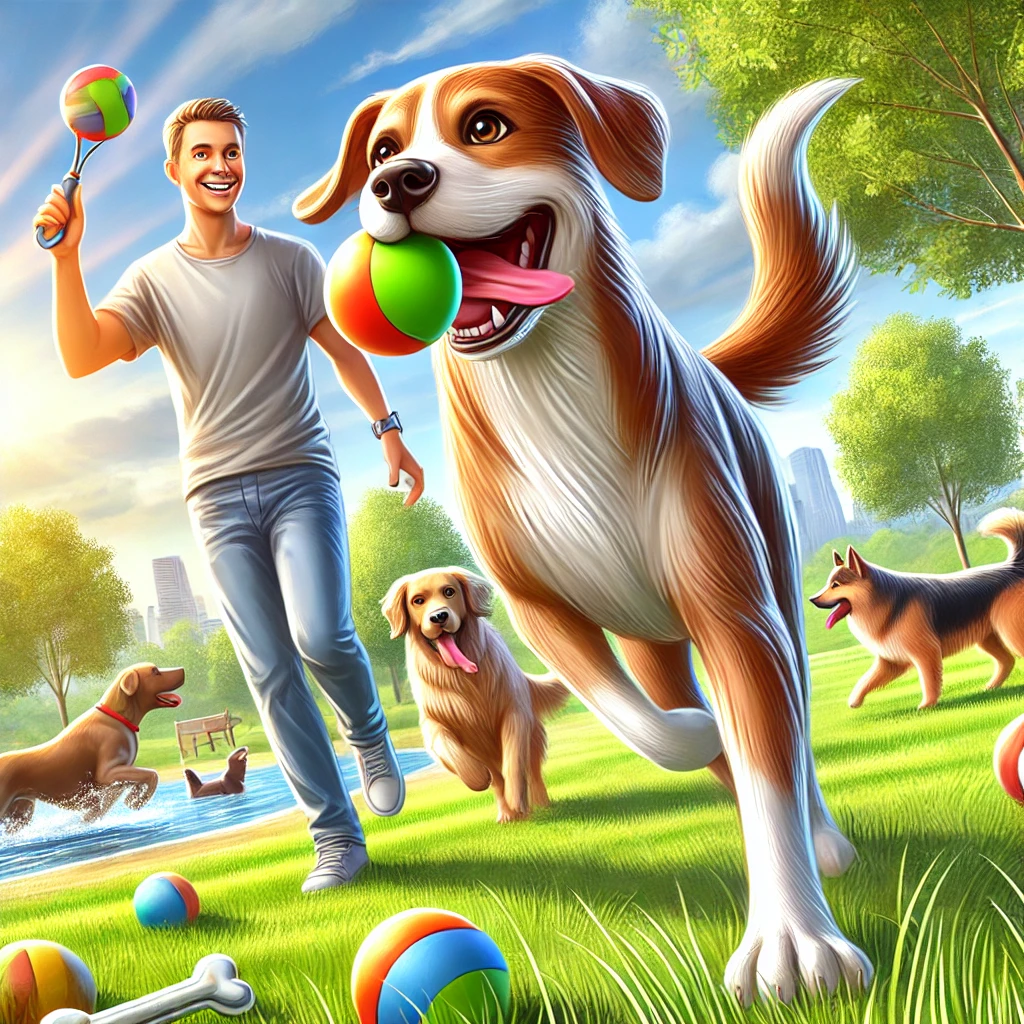Physical exercise is as essential for dogs as it is for humans. It contributes not only to their physical health but also to their mental well-being. However, not all dog owners fully understand the importance of regular physical activity or how to incorporate it effectively into their routines. In this article, we’ll explore the numerous benefits of exercise for dogs and provide practical tips to do it right.
Why Is Exercise Crucial for Dogs?
Dogs are naturally active animals. Exercise fulfills several of their fundamental needs:
- Maintaining Good Physical Health
- Weight Control: Physical activity helps prevent obesity, a common health issue in dogs.
- Muscle and Joint Strength: Regular exercise strengthens muscles and supports joint mobility, reducing the risk of conditions like arthritis.
- Cardiovascular Health: Regular activity promotes healthy blood circulation and strengthens the heart.
- Preventing Behavioral Issues
A dog that doesn’t expend enough energy may develop undesirable behaviors such as:- Destroying furniture.
- Excessive barking.
- Unmanageable hyperactivity.
Exercise helps channel their energy, reducing these problematic behaviors.
- Improving Mental Health
Like humans, dogs can experience stress and anxiety. Regular physical activity stimulates the release of endorphins, promoting their overall well-being.
Types of Exercise for Dogs
Not all dogs have the same activity needs. These depend on their breed, age, size, and energy levels. Here are some suitable types of exercise:
- Daily Walks
- Ideal for All Dogs: From puppies to seniors, daily walks are an excellent way to expend energy.
- Variety in Routes: Exploring new environments also stimulates their curiosity and sense of smell.
- Playtime
- Fetch with Balls or Frisbees: Perfect for active dogs, these games build endurance.
- Tug-of-War: Great for strong breeds, this game promotes muscle strength.
- Swimming
- Low Impact on Joints: Swimming is especially beneficial for dogs with arthritis or those who are overweight.
- Fun and Refreshing: It’s an ideal activity during hot summer days.
- Canine Sports
- Agility: Guiding your dog through an obstacle course is ideal for intelligent and energetic breeds like Border Collies.
- Canicross: Running with your dog attached to a waist belt is perfect for active owners and endurance dogs.
- Training Exercises
Teaching your dog new tricks or commands is a great way to combine mental and physical stimulation.
How to Adapt Exercise to Your Dog’s Needs
- Consider Their Age
- Puppies: While they have lots of energy, their growing bones require low-impact activities like gentle play and short walks.
- Adults: Adult dogs can usually handle more intense exercises such as running or agility training.
- Seniors: Older dogs benefit from gentle walks and low-intensity activities suited to their reduced mobility.
- Account for Their Breed
- Active Breeds: Border Collies, Huskies, and Labradors need a lot of exercise.
- Smaller Breeds: Chihuahuas or French Bulldogs require less activity but still enjoy walks and playtime.
- Pay Attention to Their Limits
Learn to recognize signs of fatigue or overexertion:- Excessive panting.
- Refusal to move.
- Limping or visible pain.
Practical Tips for Safe and Effective Exercise
- Hydration: Ensure your dog always has access to water, especially after intense activity.
- Proper Equipment: Use harnesses and leashes suited to your dog’s size and strength.
- Protect Their Paws:
- In summer, avoid walking on hot surfaces like asphalt.
- In winter, clean their paws after walks to remove ice or salt residue.
- Plan According to Weather: Adjust the intensity and duration of exercises during extreme heat or cold.
Long-Term Benefits
A well-exercised dog is generally happier, more balanced, and healthier. Regular activity not only prevents health problems such as obesity and arthritis but also strengthens the bond between you and your pet.
Physical exercise is a cornerstone of a dog’s well-being. By tailoring activities to your dog’s specific needs and ensuring their safety, you provide them with a healthy and fulfilling life. Take the time to discover what your dog enjoys and incorporate those activities into your daily routine. Your dog will thank you with vibrant health and unconditional affection.





